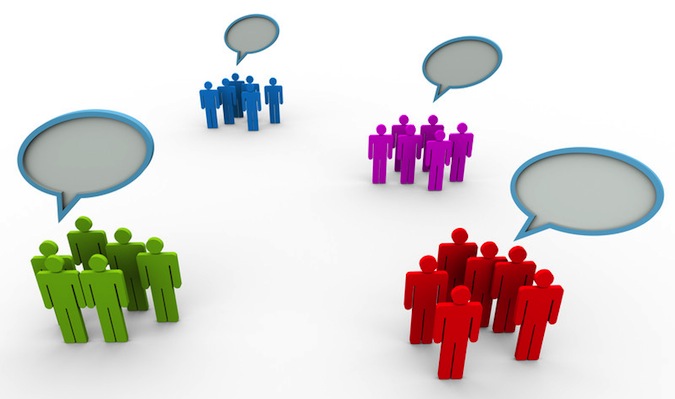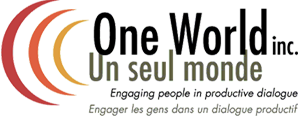
In 2012, the City of Edmonton, the Centre for Public Involvement (C PI), and Alberta Climate Dialogue (A BC D) collaborated to create a citizen dialogue and deliberation process focused on energy vulnerability and climate change. 56 citizens came together every Saturday for 6 weeks to provide advice and guidance to the City. This article is part of a seven-part series exploring some of the lessons learned about deliberative dialogue through the Edmonton Citizens’ Panel. The Energy Transition Strategy that incorporated the Panel’s recommendations was passed unanimously by Edmonton City Council in April 2015.
You can find the full working paper, written by Mary Pat MacKinnon, Jacquie Dale and Deborah Schrader, here: Looking Under the Hood of Citizen Engagement: The Citizens’ Panel on Edmonton’s Energy and Climate Challenges.
The Edmonton’s Citizens’ Panel on Energy and Climate Challenges was a team effort among three partners: Alberta Climate Dialogue (ABCD), the Centre for Public Involvement (CPI), and the City of Edmonton.
Both ABCD and CPI consist of researchers and practitioners. The researchers are largely embedded in an academic culture – studying and writing about deliberative dialogue, while the practitioners do dialogue work and are often paid (either as a consultant or as a staff) for this task. Researchers and practitioners have differences in culture, expectations, requirements and motivations. For example, researchers are required to undergo formal academic ethics reviews with specific standards and protocols (including consent forms, data collection tools and process evaluation questions, all of which require approval). Practitioners, on the other hand, typically develop evaluation forms that require clients’ approval but not usually legal or research ethics approvals.
Collaboration between these two sets of interests, expertise and organizational cultures and practices was not a given.
Challenges of Researcher–Practitioner Collaboration
For many of the involved researchers, the Edmonton Panel was both their first substantive public deliberative dialogue and their first opportunity to work with practitioners in implementation. Some challenges were concrete. For example, researchers were stretched when, at the close of sessions, the practitioners asked process-evaluation questions that had not been included in the formal surveys. The practitioners felt that these questions were important to quality design, giving panelists an opportunity to respond to the day’s activities, facilitation and agenda. Researchers did not see the merit of the questions and pushed back against conducting the “additional evaluations.”
Practitioners were challenged by moments when details got lost in communication. For example, at several sessions, practitioners were informed just before the panel got underway of the need to administer a particular research tool during that session. This forced practitioners to rework the session design and schedule in order to respect the commitment to finishing on time.
Other challenges were harder to identify. For example, there were differences in terminology and different understandings of what deliberative dialogue was e.g. theory vs practice. And these were highly nuanced differences that sometimes didn’t even become evident until deeper relationships were built.
Benefits Of Researcher–Practitioner Collaboration
Overall though the benefits outweighed the challenges, given the richness that the collaboration brought to the project.
Speaking from the perspective of a practitioner, I was pleased to work with researchers who contributed important human and intellectual resources. For example, theoretical, reflective thinking around deliberation and what was being learned about climate change psychology challenged and propelled us, as designers, to refine some processes.
As practitioners, we have limited time to conduct research into these types of issues and questions, and we found it helpful to have access to the researchers’ resources.
The research component also proved to have a positive impact on both the City and the citizens on the panel. This reinforced the seriousness of the undertaking, increasing its value and the willingness of citizens to contribute their time, energy and commitment.
We also think practitioners have something valuable to share with researchers. With decades of practical experience, we have expert knowledge of group dynamics and are able to gauge what methods to use to respond to emergent needs.
An example of strengthened process design was our collective reflection on the value of including more ‘holistic’ methods and the resultant decision to use a technique called “soft-shoe shuffle,” in which participants move to a designated space in the room that aligns with their perspective or values. This technique takes the tension away from the expression of divergent opinions.
Although the differing perspectives of researchers and practitioners stretched everyone and required multiple panel design iterations, the combination of the practical with the theoretical resulted in stronger designs. Research on deliberative dialogue has great potential to strengthen the work of practitioners and improve the field overall but it does take collaboration to identify critical issues and to translate the research into useable practical knowledge.
 Designing the right kind of engagement and dialogue process can help people share perspectives and experiences, critically examine trade-offs and options, and build collective insight to be able to make better decisions. Maybe a group of government employees need help articulating a public policy issue more clearly or members of a health NGO can’t agree on a particular course of action. While everyone may not agree, a successful dialogue session can produce mutual understanding, bringing people together across differences to resolve complex problems.
Designing the right kind of engagement and dialogue process can help people share perspectives and experiences, critically examine trade-offs and options, and build collective insight to be able to make better decisions. Maybe a group of government employees need help articulating a public policy issue more clearly or members of a health NGO can’t agree on a particular course of action. While everyone may not agree, a successful dialogue session can produce mutual understanding, bringing people together across differences to resolve complex problems.

 Patient involvement in health care improvement projects has been growing steadily in recent years. It’s the right thing to do – to seek the input of those who will be affected by the decision. In Canada, there has been increased recognition of this moral obligation.
Patient involvement in health care improvement projects has been growing steadily in recent years. It’s the right thing to do – to seek the input of those who will be affected by the decision. In Canada, there has been increased recognition of this moral obligation.

 When we enter into any meeting, we are bringing with us our life and work experiences, our agendas, our biases, our hopes and our viewpoints about what should happen and how. This can create undercurrents that make it difficult for people to work productively or converse effectively. A goal of facilitation is to acknowledge these dynamics and create a safe space for individuals to exchange thoughts, ideas and learning.
When we enter into any meeting, we are bringing with us our life and work experiences, our agendas, our biases, our hopes and our viewpoints about what should happen and how. This can create undercurrents that make it difficult for people to work productively or converse effectively. A goal of facilitation is to acknowledge these dynamics and create a safe space for individuals to exchange thoughts, ideas and learning.

